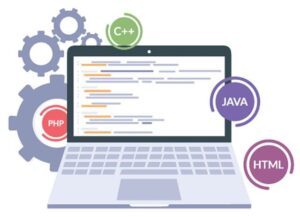
The WordPress ecosystem continues to evolve at a rapid pace, driven by technological advancements, shifts in user demands, and the ever-growing popularity of online content creation. In this blog, we will explore the current and emerging trends that are shaping the future of WordPress development. From cutting-edge features like Full Site Editing (FSE) to enhanced performance optimization techniques, WordPress developers have a unique opportunity to stay ahead of the curve by embracing these changes and incorporating them into their work.
Full Site Editing: The Next Evolution in WordPress Customization
One of the most revolutionary updates to WordPress in recent years has been the introduction of Full Site Editing. With FSE, developers and users alike can have unprecedented control over the appearance and functionality of entire websites. Rather than focusing solely on individual posts or pages, Full Site Editing allows for the customization of every aspect of a WordPress website, from the header and footer to the menus and sidebars. The Gutenberg block editor is at the core of this feature, offering a user-friendly, drag-and-drop interface that replaces traditional PHP-based theme files. This shift to block-based development is a game-changer, simplifying theme customization and empowering non-developers to take control of their websites. As more developers become familiar with FSE, the boundaries between themes and page builders will blur, making it easier to create cohesive, dynamic websites without relying on external tools.
Headless WordPress: Decoupling the Front-End for Better Performance
Another trend that is taking the WordPress community by storm is the increasing use of headless WordPress. In a headless architecture, WordPress serves solely as a content management system (CMS), while a separate technology, such as React or Angular handle the front-end presentation layer. This decoupling of the front-end and back-end opens up a world of possibilities for developers, allowing them to build lightning-fast, highly interactive websites without being limited by WordPress’s native theming system. Headless WordPress is well-suited for projects requiring complex user interfaces, real-time data interactions, or seamless integrations with third-party services. With APIs like the WordPress REST API and GraphQL, developers can retrieve content from WordPress and display it on any device or platform, making it a versatile option for modern web applications.

Performance Optimization: Keeping Speed and Efficiency at the Forefront
Performance optimization is a perennial concern in the world of web development, and WordPress is no exception. As websites become more feature rich and media-heavy, ensuring fast load times and smooth user experiences has become paramount. In recent years, there has been a growing emphasis on optimizing WordPress websites for speed and performance, driven in part by Google’s Core Web Vitals update. Developers are now focusing on techniques such as lazy loading images, deferring JavaScript execution, and using content delivery networks (CDNs) to distribute assets more efficiently. Caching mechanisms, both server-side and client-side, also play a crucial role in minimizing
server load and delivering content to users faster. Additionally, advances in hosting technologies, such as managed WordPress hosting and serverless computing, have made it easier for developers to achieve high-performance websites without extensive manual optimization. As performance continues to be a critical ranking factor for search engines, developers who prioritize speed and efficiency will have a competitive edge.
Artificial Intelligence and Machine Learning: Enhancing WordPress Capabilities
One of the more exciting developments in WordPress development is the rise of artificial intelligence (AI) and machine learning (ML) integrations. These technologies are being increasingly adopted across various industries, and WordPress is no different. AI-powered tools can now automate a wide range of tasks, from content creation and SEO analysis to customer service and marketing automation. For example, AI-powered content generators can analyze user intent and create blog posts, social media updates, and product descriptions with
minimal human intervention. In the realm of SEO, AI tools can conduct comprehensive audits of a website, identifying areas for improvement, optimizing keyword usage, and predicting search engine trends. Chatbots and virtual assistants, powered by machine learning, can enhance user experiences by providing real-time support and personalized recommendations. As AI technology continues to advance, WordPress developers will have access to a growing suite of tools that can streamline workflows and deliver smarter, more intuitive websites.
WooCommerce Innovations: Augmented Reality and Subscription Models
In the realm of e-commerce, WordPress’s WooCommerce platform remains one of the most popular solutions for building online stores. However, the e-commerce landscape is evolving rapidly, and developers need to stay ahead of the curve to remain competitive. One trend that has gained significant traction is the integration of augmented reality (AR) and virtual reality (VR) into WooCommerce websites. AR and VR technologies allow customers to visualize products in their real-world environments before making a purchase, providing a more immersive and interactive shopping experience. For instance, furniture retailers can enable users to “place” virtual furniture in their homes using their smartphones, while fashion brands can offer virtual try-ons for clothing and accessories. By incorporating these technologies into WooCommerce websites, developers can create unique shopping experiences that stand out from the competition and drive higher conversion rates.
Another e-commerce trend that is shaping the future of WordPress development is the rise of subscription-based models and membership sites. As more businesses shift towards recurring revenue streams, developers are increasingly being tasked with creating seamless subscription experiences within WordPress. WooCommerce Subscriptions, MemberPress, and Restrict Content Pro are just a few of the popular plugins that enable developers to build robust membership and subscription-based websites. These plugins offer a wide range of features, from tiered memberships and recurring billing to content dripping and access control. As businesses continue to explore new ways to monetize their content and services, developers who can build flexible, user-friendly membership sites will be in high demand.

Security: Staying Ahead of Cyber Threats
Security remains a top priority for WordPress developers, especially as cyber threats become more sophisticated. WordPress powers over 40% of the web, making it a prime target for hackers. To mitigate these risks, developers are increasingly focusing on security best practices, such as regularly updating core files, plugins, and themes, implementing strong password policies, and utilizing two-factor authentication (2FA). In addition to these traditional security measures, there has been a growing interest in security-focused hosting environments that offer automatic backups, malware scanning, and firewall protection. Developers are also adopting more advanced security solutions, such
as Web Application Firewalls (WAFs) and Intrusion Detection Systems (IDS), to safeguard websites from emerging threats. As cyberattacks continue to rise, developers who prioritize security in their workflows will not only protect their clients’ websites but also enhance their professional reputations.
Mobile-First Development: Meeting the Needs of Modern Users
The increasing demand for mobile-first websites has also significantly impacted WordPress development. With mobile devices accounting for more than half of global web traffic, developers must ensure that the websites they create are optimized for mobile users. This involves more than just responsive design; it requires careful consideration of factors such as touch-friendly navigation, fast load times on mobile networks, and streamlined user interfaces that work well on smaller screens. In addition to building mobile-responsive websites, developers are exploring the creation of Progressive Web Apps (PWAs) using WordPress. PWAs combine the best features of websites and native mobile apps, offering users offline functionality, push notifications, and fast load times. By building PWAs with WordPress, developers can deliver app-like experiences without the need for separate app development, opening up new possibilities for mobile engagement.
Sustainable Web Development: Reducing the Carbon Footprint of the Web
Sustainability is becoming an increasingly important consideration in the world of WordPress development, driven by growing awareness of the environmental impact of the web. As websites consume more resources and energy, developers are being encouraged to adopt eco-friendly practices that reduce the carbon footprint of their projects. This includes optimizing code for efficiency, minimizing the use of heavy assets like images and videos, and choosing energy-efficient hosting providers. Green hosting companies like Kualo and GreenGeeks are
gaining popularity for their commitment to using renewable energy and offsetting carbon emissions. By embracing sustainable web development practices, WordPress developers can contribute to a more eco-friendly internet while appealing to environmentally conscious clients.

Accessibility: Building Inclusive Websites
Accessibility is another key consideration that is shaping the future of WordPress development. Ensuring that websites are accessible to users with disabilities is not only a legal requirement in many regions but also a moral imperative. Developers are increasingly focusing on making their WordPress websites compliant with Web Content Accessibility Guidelines (WCAG), which outline best practices for creating accessible websites. This includes providing alternative text for images, ensuring sufficient color contrast, making navigation keyboard friendly, and adding ARIA (Accessible Rich Internet Applications) labels for screen readers. By prioritizing accessibility in their development workflows, WordPress developers can create websites that are inclusive and usable by everyone, regardless of their abilities.
Multilingual Websites: Reaching Global Audiences
As the WordPress community continues to grow, so too does the demand for multilingual websites. With businesses and organizations expanding their reach to global audiences, developers are increasingly tasked with creating WordPress websites that support multiple languages. Popular plugins such as WPML (WordPress Multilingual Plugin) and Polylang make it easier for developers to build multilingual websites by providing tools for translating content, managing language-specific URLs, and handling localized SEO. In addition to traditional
language translations, there is a growing interest in real-time machine translation services, powered by AI, that can automatically translate website content into multiple languages without the need for human intervention. By embracing multilingual development practices, WordPress developers can help their clients tap into new markets and reach diverse audiences around the world.
Conclusion: Embracing the Future of WordPress Development
The future of WordPress development is bright, with numerous trends and innovations reshaping the way developers build and manage websites. From the introduction of Full Site Editing and the rise of head less WordPress to advancements in performance optimization and AI integration, there are countless opportunities for developers to stay ahead of the curve. By embracing these trends and continuously honing their skills, WordPress developers can create cutting-edge websites that meet the evolving needs of users and businesses alike.


